Data for Questions 1 to 4 :
A newspaper agent sells The TOI, The HT and The IN in equal numbers to 302 persons. Seven getHT & IN, twelve get The TOI & IN, nine get The TOI & HT and three get all the three newspapers.
The details are given in the Venn diagram
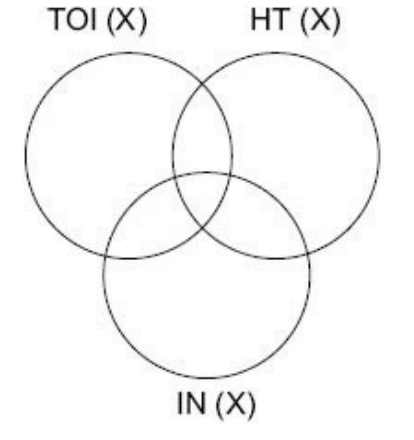
1. How many get only one paper?
a) 280
b) 327
c) 109
d) None of these
Explanation:
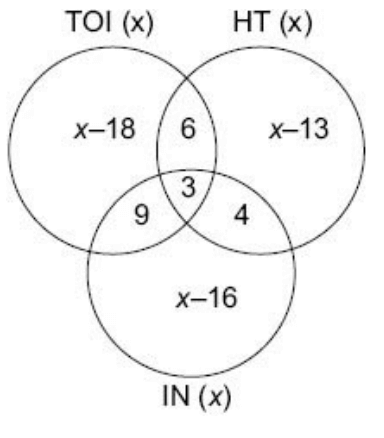
Based on this figure we have:
x + x – 13 + 4 + x – 16 = 302
3x – 25 = 302
x = 327. Hence, x = 109
Consequently the figure becomes:
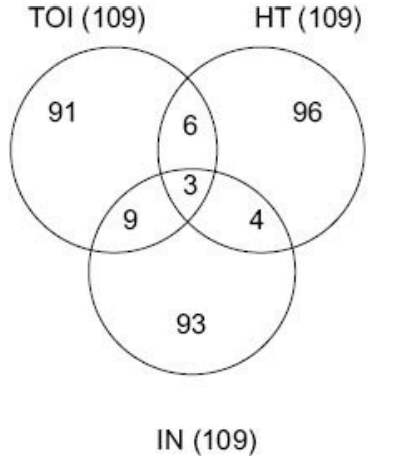
91 + 93 + 96 = 280
Option (a) is correct
2. What percent get The TOI and The HT but not The IN
a)more than 65%
b) less than 60%
c) @ 64%
d) None of these
Explanation: 193/302 @ 64%.
Option (c) is correct
3. The number of persons buying The TOI and The HT only, The TOI and The IN only and The
HT and The IN only are in the ratio of
a) 6:4:9
b) 6:9:4
c) 4:9:6
d) None of these
Explanation: 6:9:4 is the required ratio.
Option (b) is correct
4. The difference between the number reading The HT and The IN only and The HT only is
a) 77
b) 78
c) 83
d) None of these
Explanation: 96 – 4 = 92.
Options (d) is correct
5. A group of 78 people watch Zee TV, Star Plus or Sony. Of these, 36 watch Zee TV, 48 watch
Star Plus and 32 watch Sony. If 14 people watch both Zee TV and Star Plus, 20 people watch
both Star Plus and Sony, and 12 people watch both Sony and Zee TV find the ratio of the
number of people who watch only Zee TV to the number of people who watch only Sony.
a) 9:4
b) 3:2
c) 5:3
d) 7:4
Explanation: 78 = 36 + 48 + 32 – 14 – 20 – 12 + x
x = 8
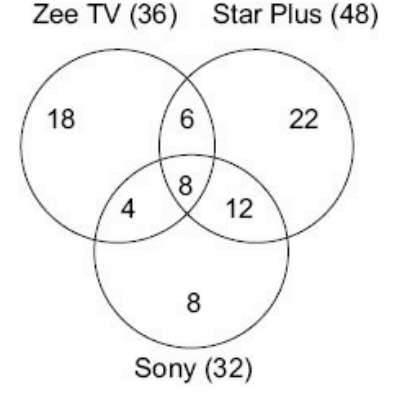
Required ratio is 18:8 = 9:4.
Option (a) is correct.
Data for Questions 6 & 7 : The following data was observed from a study of car complaints received from 180 respondents at Colonel Verma’s car care workshop, viz., engine problem, transmission problem or mileage problem. Of those surveyed, there was no one who faced exactly two of these problems. There were 90 respondents who faced engine problems, 120 who faced transmission problems and 150 who faced mileage problems.
6. How many of them faced all the three problems?
a) 45
b) 60
c) 90
d) 20
Explanation:
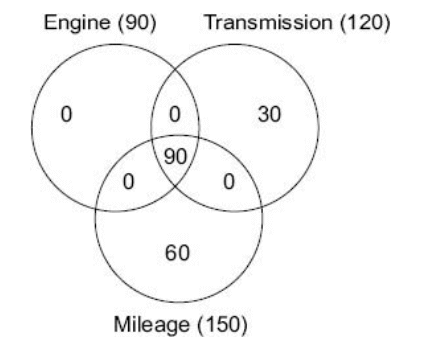
Option (c) is correct
7. How many of them faced either transmission problems or engine problems?
a) 30
b) 60
c) 90
d) 40
Explanation:
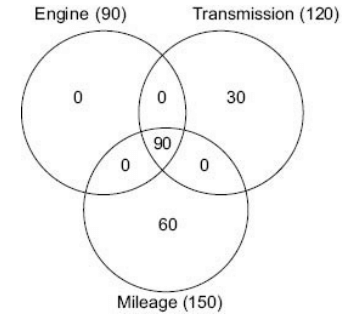
There are 30 such people.
Option (b) is correct.
Data for Questions 8 to 10 :
In the ancient game of “placing the numbers on a tree branch” a
sequence of numbers is provided to an individual participant and he is then asked to place the
numbers in the branches of a hanging tree with the first number forming the top most node of the tree
(and this node is called the root of the tree) and the subsequent numbers are placed in the left sub tree
if the number is smaller than the number at the root or in the right sub tree, if the number is greater
than the number in the root. A node is denoted by an oval and has to include a number in it.
Each node
at a level can be viewed as a tree itself and the same rule applies to it as well. For every node, if a
number is greater than the number at the node, then it must be in the nodes to its right and if the number
be smaller than the number at the node, then it must be in the nodes to its left. New numbers must obey
the rule of all nodes above itself.
Numbers shall not repeat themselves in the nodes and in case a number appears which has already
appeared earlier in the tree it has to be placed on the right most of its possible positions.
E.g, 36, 28, 60, 92, 8, 44
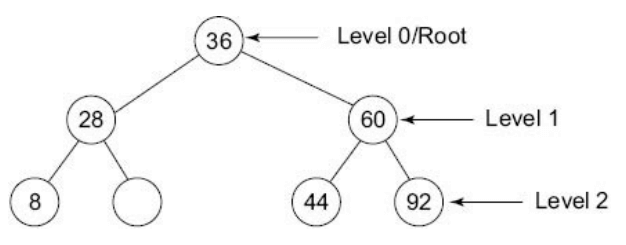
Given is a sequence of numbers and an empty tree. Fill the numbers in the appropriate nodes. The
sequence is given in order and starts from 56
56, 60, 16, 36, 28, 72, 12, 20, 64, 16, 80, 68, 36, 56, 20
8.What are the numbers at level 2?
a) 12, 20, 28
b) 12, 36, 72
c) 12,36,56,72
d) 16, 36,64, 80
Explanation:
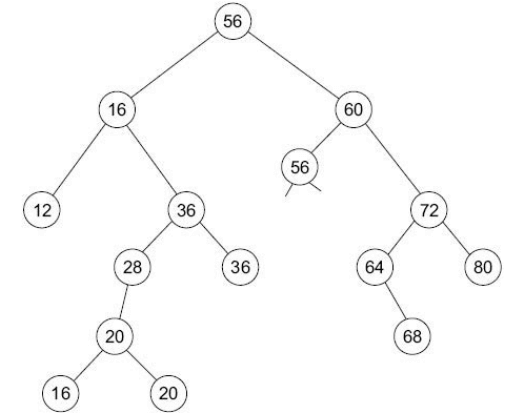
Option (c) is correct
9. What is the sum of the numbers at the level 3?
a) 172
b) 128
c) 76
d) 208
Explanation: The sum is 208 = 80 + 64 + 36 + 28.
Option (d) is correct
10. How many nodes are at the 4th level?
a) 7
b) 3
c) 9
d) 2
Explanation: There are 2 nodes at the 4th level.
Option (d) is correct.